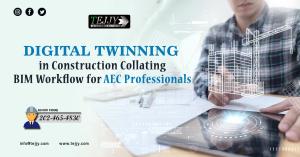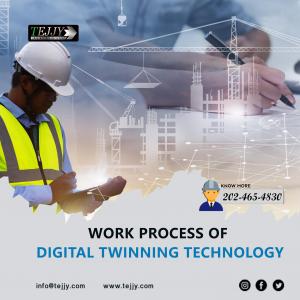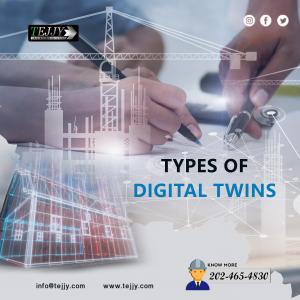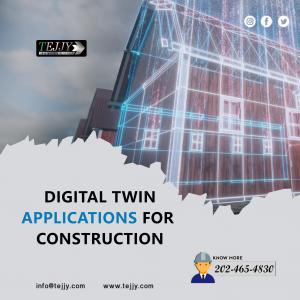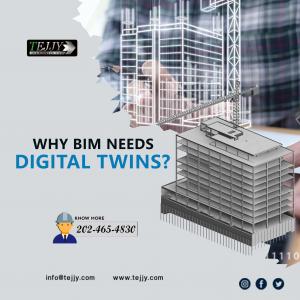Digital Twinning in Construction Collating BIM Workflow for AEC Professionals
A digital twinning in the AEC industry is a dynamic replica of a physical asset, enhancing project delivery & operations in the built environment.
Digital twin is a product of BIM, where BIM integrates data during the design-build process. Through digital twinning, practical data is used for facility operations and maintenance. ”
WASHINGTON DC, DISTRICT OF COLUMBIA , USA, October 5, 2021 /EINPresswire.com/ -- A digital twinning in the construction, engineering, and architectural industry constitutes to be a dynamic replica of a physical asset. The technology collates design and real-time data for informed decision making. The holistic representation of the facility and the process structure is what a digital twin technology. The data-based business processes ensure detailed insights into an actual process, serving as a base for planning and forecasts.— Sukh Singh
Evolution of the Technology:
· The concept was developed by David Gelernter in his book ‘Mirror Worlds’ (1991) with Michael Grieves from Florida Institute of Technology.
· In 2002, Grieves moved to the University of Michigan when he introduced a Society of Manufacturing Engineers session in Troy, Michigan.
· NASA first embraced the digital twin concept and in the 2010 Roadmap Report, John Vickers of NASA gave the concept a new name to create simulations of space capsules as well as a craft for testing.
· In 2017, Gartner named it as the top strategic technology trend. Since then, the idea has been used in a wide array of industrial applications and processes.
The Vice President of a BIM Company mentioned - "Digital construction involves the application of tools for enhancing the delivery and operating in the built environment. This facilitates in making the delivery, operation and renewal of design built environment safer, efficient and collaborative."
Significance of digital twinning in design-build construction:
· Digital construction management, through BIM and a connected data environment, enables detailed views of project phases, avoiding problems.
Industrial Impact through digital twin BIM:
· The technique forms the core of the development, through automation, data exchange, and manufacturing practices, providing endless opportunities.
Why BIM needs Digital Twins?
ü BIM and digital twins are at the core of building life cycle management.
ü BIM makes smart buildings, where digital twins manage complex spaces, enabling buildings to become dynamic, from conception to utilization.
Digital Twin vs. BIM:
· Digital twins are virtual formations of a building. BIM focuses on the way the building is constructed, whereas digital twins emphasize the way people make use of the space.
· The technique comes into play when the construction gets completed. While BIM accomplishes dynamic systems of large building projects, digital twins provide the foundation for building assets and utilization.
Work Process of Digital Twinning Technology:
ü The design works by assembling data and making computational models test it. This encompasses an interface between the simulated model and a physical object for receiving feedback as well as real-time data.
ü The digital twin technology integrates building systems, sensors, as well as utility meter data multidimensional models. It retains operational and behavioral awareness, essential for simulation, prediction, and informed decision making based on practical situations.
Types of Digital Twins: Autodesk digital twin software involves a greater maturity and transformation, providing enhanced value to businesses. Some of the types include:
· Descriptive: This entails a visual representation with real-time, editable design as well as construction data, including 3D models and Building Information Modeling.
· Informative: This digital twin technology facilitates enhanced integration with sensors and data for project insight.
· Predictive: This captures real-time as well as contextual data, and analytics for identifying potential issues.
· Comprehensive: This digital twin technology leverages innovative modeling and simulation for future scenarios, analytics and recommendations.
· Autonomous: This helps to make decisions through artificial intelligence while using advanced algorithms for simulation as well as 3D visualization.
Digital twinning enhancing construction project delivery:
ü The primary function and advantage in construction are to examine the virtual construction sequence and logistics scenarios to minimize on-site operating costs.
ü Collects and monitors real-time data for optimizing the building's operational performance and sustainability.
ü Enables distribution of information across the lifecycle of a physical asset for maximizing outcomes, investing through data processing, simulation & advanced analytics.
Digital Twin Applications for Construction:
Several areas in the construction industry benefit from implementing the digital twins. In linear projects like bridges and tunnels, this technology along with SYNCHRO 4D construction modeling provides several capabilities including:
· Model Slicing – Engineers break linear design models of a project into construction components for creating a construction schedule about the way people will be required to work.
· Quantity take-off/BOQ – Users implement this method for estimating what they need in terms of labor and material to build projects through a manual process.
· 4D Scheduling/Simulation – Bentley’s SYNCHRO 4D enables users to virtually plan, schedule, and control the construction aspect of the project.
Inclusions in Digita Twin Architecture:
In a design-build environment, a digital twin creates a replica of a physical entity. This helps to record a single step of the construction cycle through:
· BIM Models
· Drawings
· Schedules
· Contracts
· Construction Documents (change orders, submittals, RFIs)
· Operational data
· Artificial Intelligence
Industries Facilitated from Digital Twin Companies:
The technique is used in a wide variety of industries for a range of applications and purposes. Some examples include:
· Manufacture
· Automotive
· Retail
· Healthcare
· Disaster Management
· Smart Cities
Process of Designing:
Digital twins are created to serve a wide array of applications, like testing a prototype or design, evaluating a product or process working under various circumstances, as well as determining and monitoring project lifecycle.
· Designing:
ü The design of this technology is created by collecting data and creating models for examining it.
ü This encompasses an interface between the model and actual physical object for the sake of sending and receiving feedback as well as data in real-time.
· Data:
ü A digital twin entails data about a building process for a virtual model to represent the state of the practical procedure.
ü The data relates to the product lifecycle, encompassing design specifications, production processes as well as engineering information.
ü This also includes product information such as equipment, materials, methods and quality control.
ü Data relates to the operation, real-time feedback, historical analysis and maintenance.
ü Other data in digital twin design include business data and end-of-life methods.
· Modeling:
ü After collecting the data, digital twinning creates analytical models for showing operating effects and determining behaviors.
ü The models prescribe actions as per engineering simulations, statistics, machine learning, artificial intelligence, etc.
ü Then the models get displayed in 3D to facilitate inspection.
· Linking:
ü Digital twins are linked to find equipment and put them into production.
ü Using linked digital twins, AEC professionals facilitate building operations.
Senior BIM Consultant of Tejjy Inc. mentioned:
“Digital twin is a product of BIM, where BIM integrates data during the design-build process. Through digital twinning, practical data is used for facility operations and maintenance. “
Benefits of the technique for Construction Projects:
· Enhanced risk assessment
· Real-time remote monitoring
· Improved team collaboration
· Better financial decision-making
· Updated data security protocols
· Managing data quality
Challenges resolved through the technique:
Through a contextual model of building and operations, the technology provides:
· Transformative spatial awareness
· Root cause analysis
· Intelligent recommendations
· Predictive maintenance
Digital twinning architecture takes modular construction to a new level:
· A ‘digital twin’ supports construction projects by automating design, production, and operation. This serves as the pillar to prefabrication for achieving industrial efficiency.
Key elements of the digital twin in design-build construction:
· Physical Entity
· Data
· Virtual Model
Why Choose Digital Twinning?
· Real-time Data
ü Enables project teams to know real-time building performance, allowing tracking and optimizing building efficiency.
· Safety & Security
ü Predicts potential failures in building systems like HVAC, electrical, etc. to prevent accidents and damages, leading to time and cost savings.
· Simulation
ü High-fidelity simulation is feasible with this technology. The data extracted is sensor-based and accurate for clash detection, cost estimation and construction.
· Data Prediction
ü The technique encompasses all aspects of the physical entity, enabling facility operations and management. It predicts data like accurate cost estimation, energy demand, traffic congestion, weather forecast, etc.
To know more about how digital twins help transform the construction industry, get in touch with Tejjy Inc. BIM company in USA at 202-465-4830 or info@tejjy.com.
sukhchain singh
Tejjy Inc.
+1 2405954210
email us here
Visit us on social media:
Facebook
Twitter
LinkedIn
How Tejjy Inc. Helps AEC Business to Stand Out in the Construction Sector in USA?

